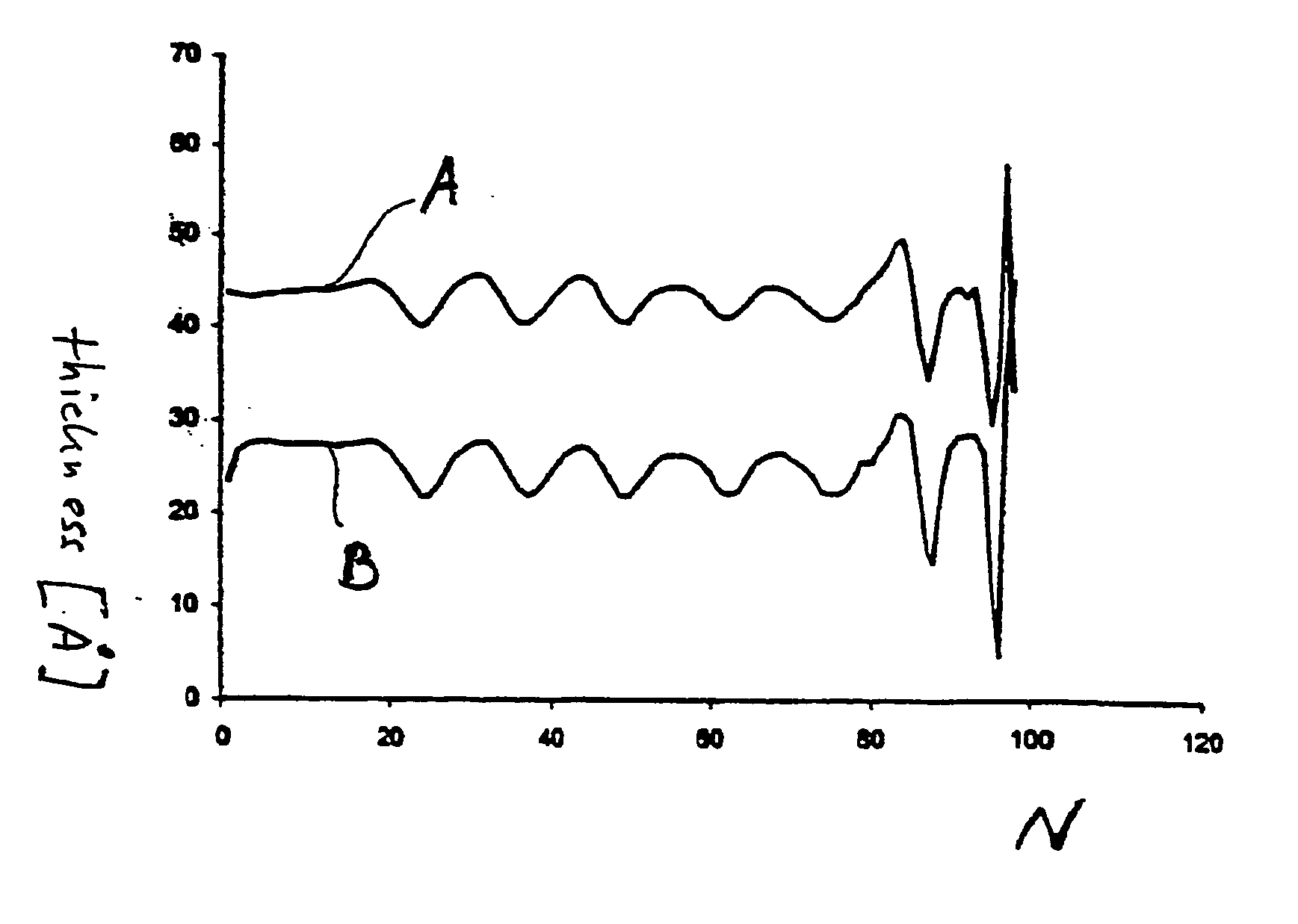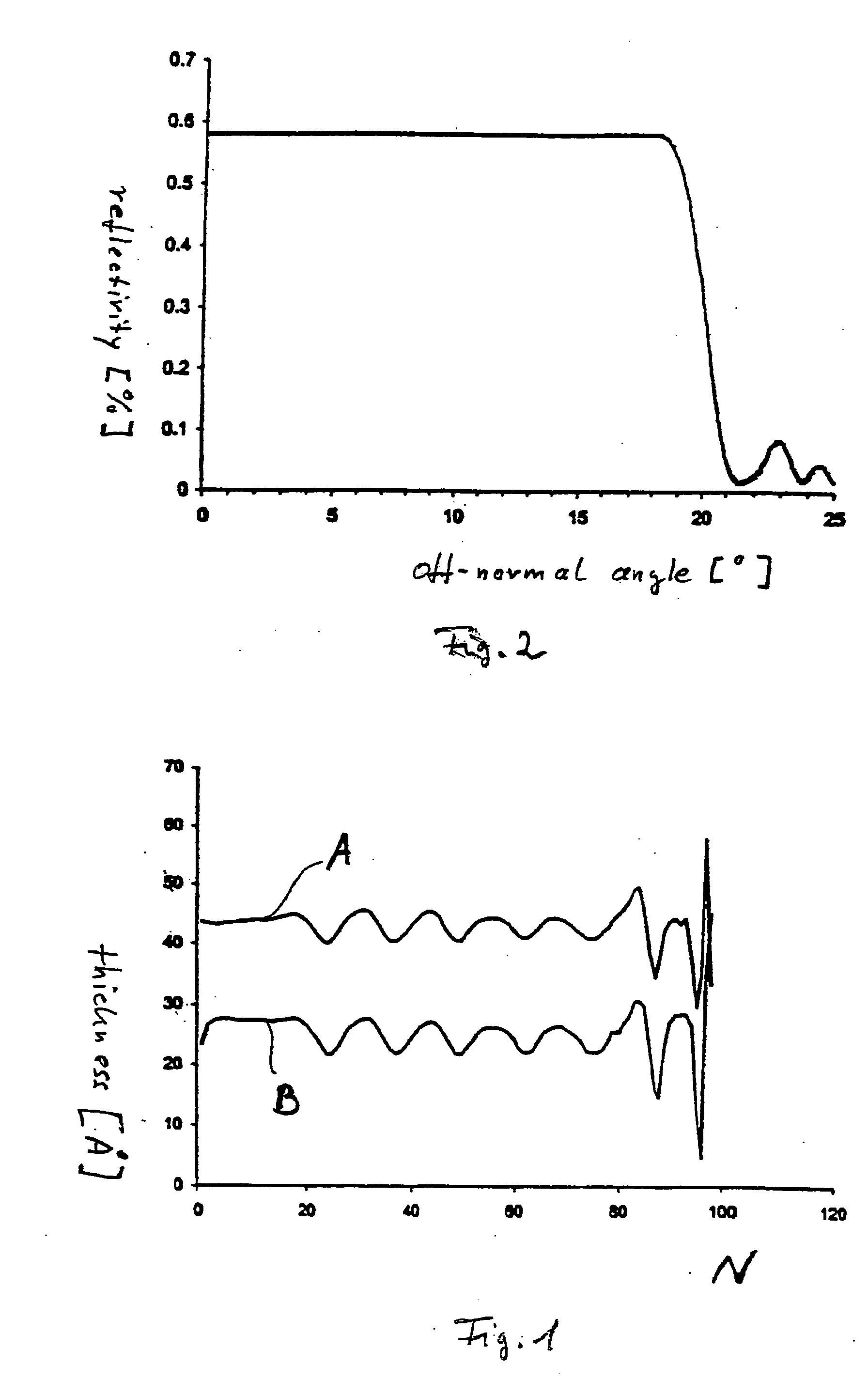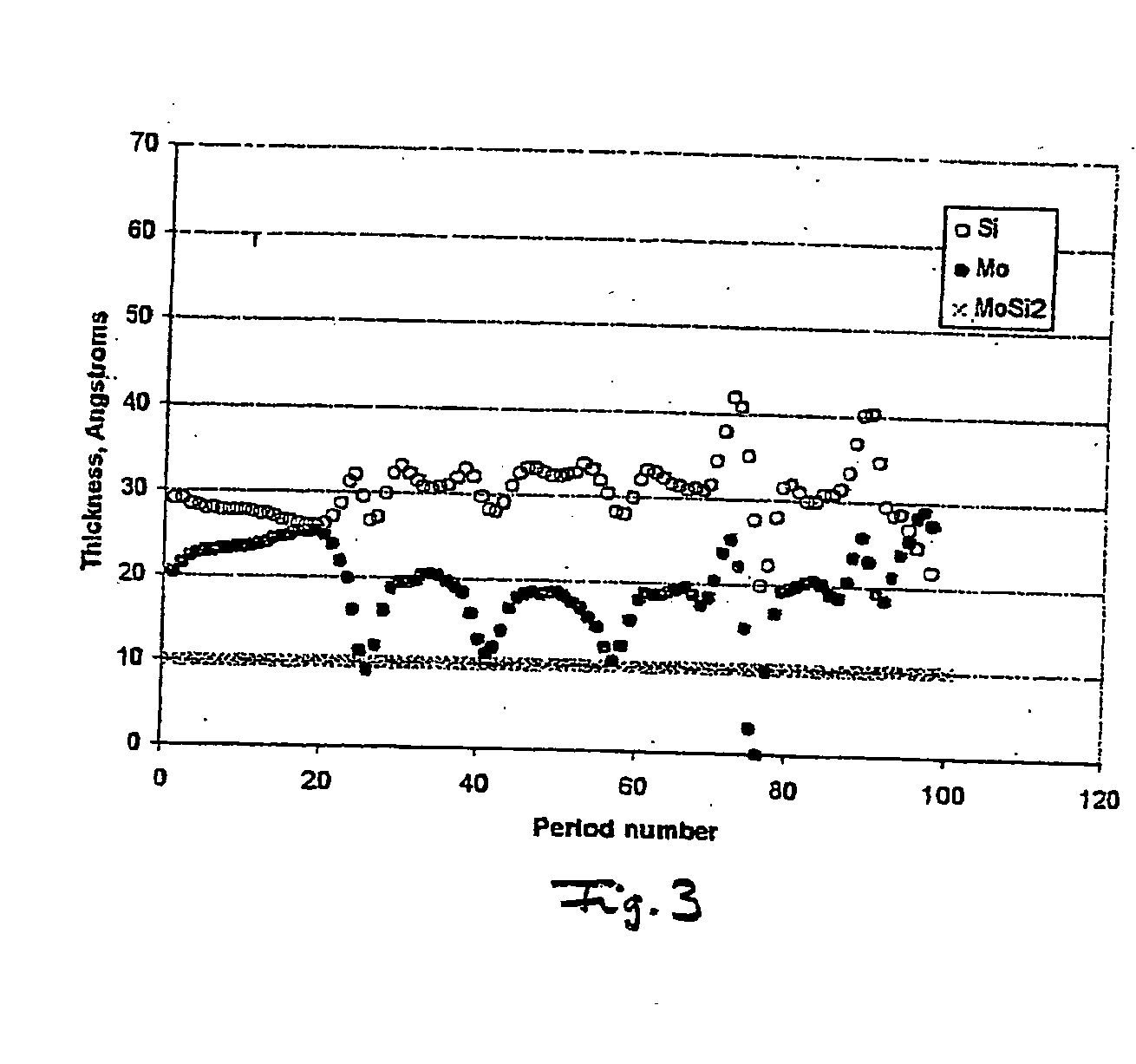Optical broad band element and process for its production
a broad band element and optical technology, applied in the direction of instruments, lighting and heating apparatus, nuclear engineering, etc., can solve the problems of changing parameters, less suited, and system saturated with hydrogen
- Summary
- Abstract
- Description
- Claims
- Application Information
AI Technical Summary
Benefits of technology
Problems solved by technology
Method used
Image
Examples
example 1
[0049] For producing a broad band reflector for a wavelength of 13.4 nm and an angle band width of 20°, molybdenum carbide and silicon were chosen as materials. Molybdenum carbide and silicon are two materials which do not interact. Silicon was also chosen as cap layer material. No adhesive stratum forms on silicon, but simply a negligibly thin silicon dioxide stratum, should the broad band reflector not be kept in a vacuum. Both silicon and molybdenum carbide, on the basis of their absorption coefficient, are suitable for the production of optical elements in the extreme ultra violet wavelength range.
[0050] Given a set or period number N=100 and a layer thickness distribution which was obtained according to E. Ziegler et al., the thickness distribution was optimized as per P. van Loevezijn et al. Their resulting thickness distribution is represented in FIG. 1. Here the thickness is represented depending on the set number N, where counting is started at the side turned to the vacuu...
example 2
[0052] Three-material depth-graded multilayer deposited in the sequence: Mo / MoSi2 / Si / MoSi2. Design contains variable thicknesses of Mo and Si, with the thickness of MoSi2 being kept constant at 1.0 nm (FIG. 3). The structure is covered with 2.0 nm SiO2 cap layer. The structure is optimized for an even reflectivity response in the range of off-normal angles of incidence 0-18 degrees at 13.4 nm (FIG. 4). Molybdenum disilicide (MoSi2) is the most stable compound found in Mo-Si system. Therefore the deliberately introduced MoSi2 layers in the design serve as a strong diffusion barrier between Mo and Si. Top SiO2 layer provides reliable protection against oxidation of deeper layers in the structure while kept in air or vacuum. Precision of thicknesses of layers in the structure is determined by precision of a deposition method and will not be altered by interactions of materials in the structure with each other or with atmosphere.
[0053] A comparison of the reflectivity curve in FIG. 4 (...
PUM
 Login to View More
Login to View More Abstract
Description
Claims
Application Information
 Login to View More
Login to View More - R&D
- Intellectual Property
- Life Sciences
- Materials
- Tech Scout
- Unparalleled Data Quality
- Higher Quality Content
- 60% Fewer Hallucinations
Browse by: Latest US Patents, China's latest patents, Technical Efficacy Thesaurus, Application Domain, Technology Topic, Popular Technical Reports.
© 2025 PatSnap. All rights reserved.Legal|Privacy policy|Modern Slavery Act Transparency Statement|Sitemap|About US| Contact US: help@patsnap.com



